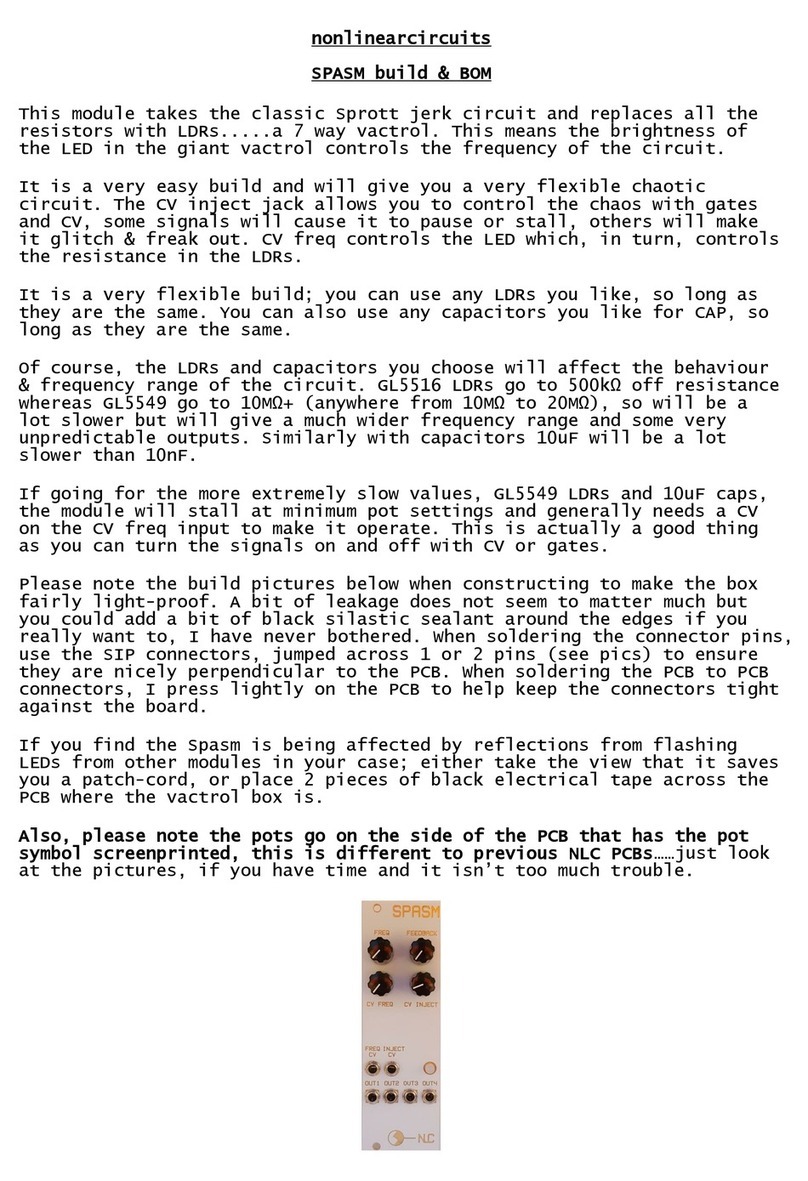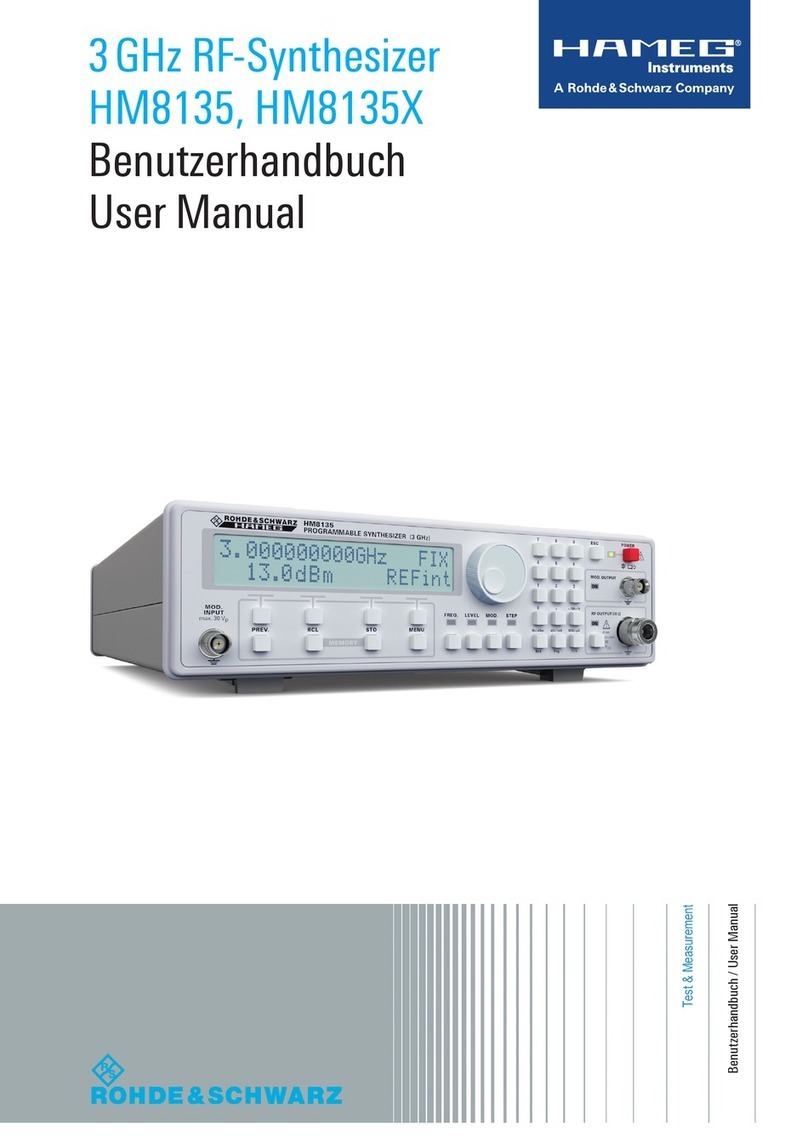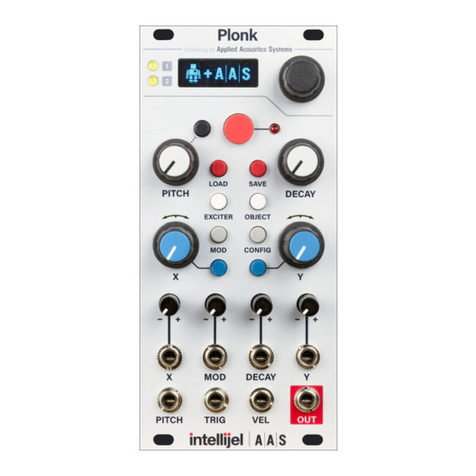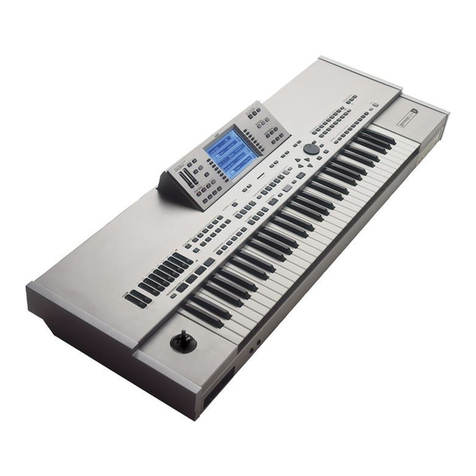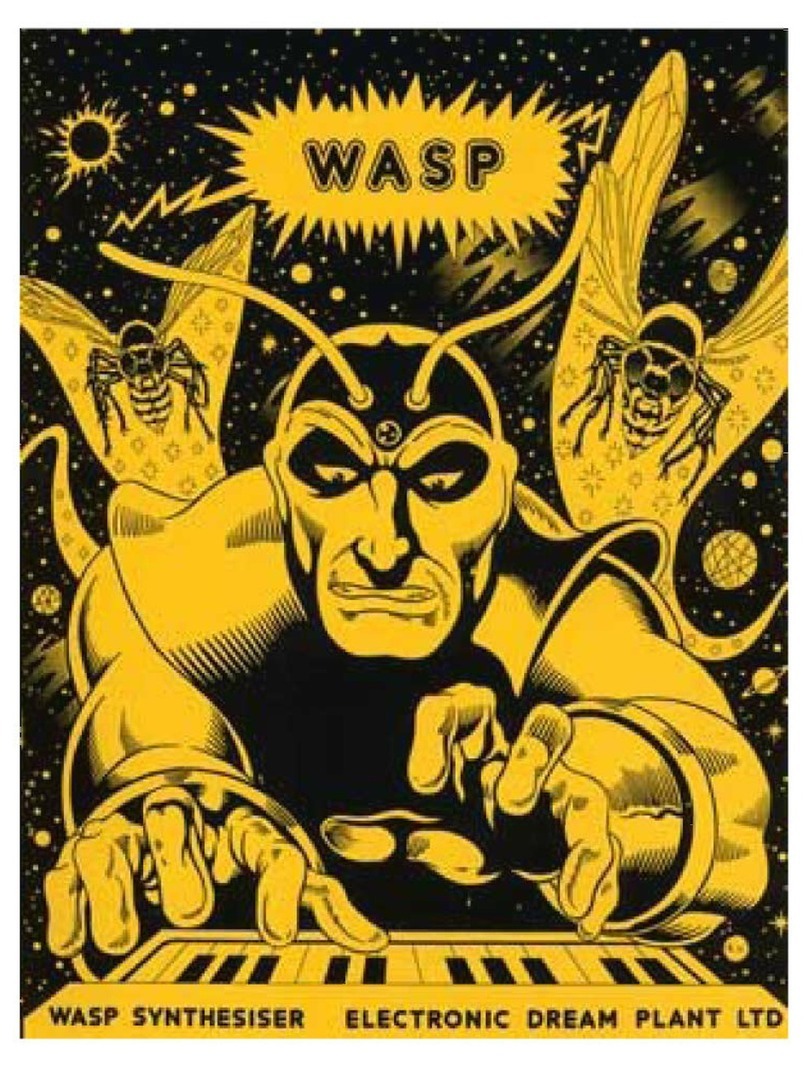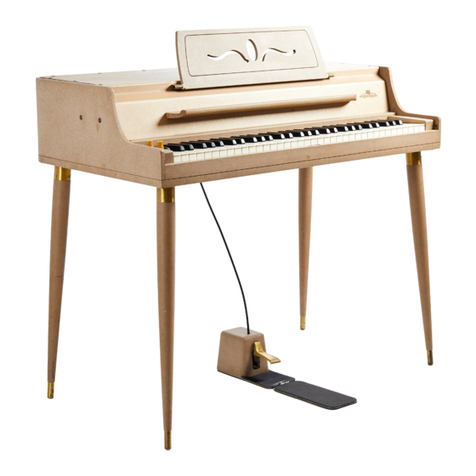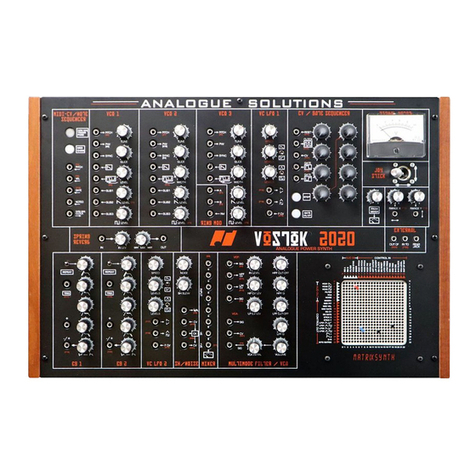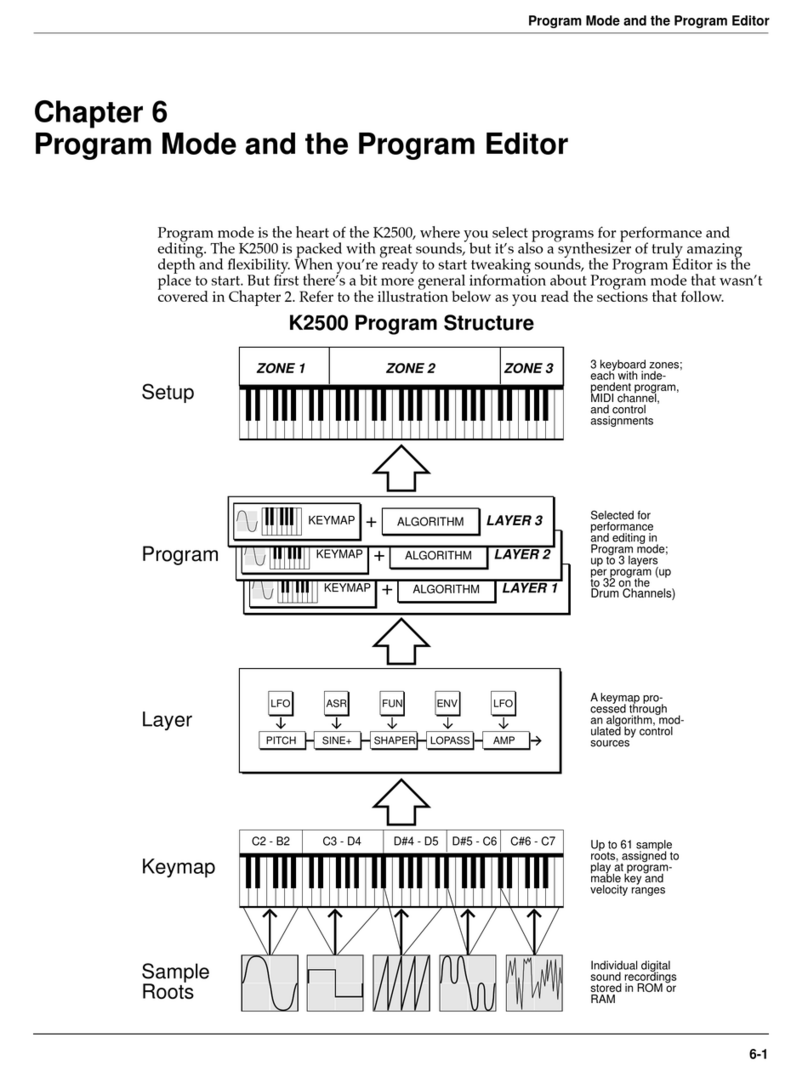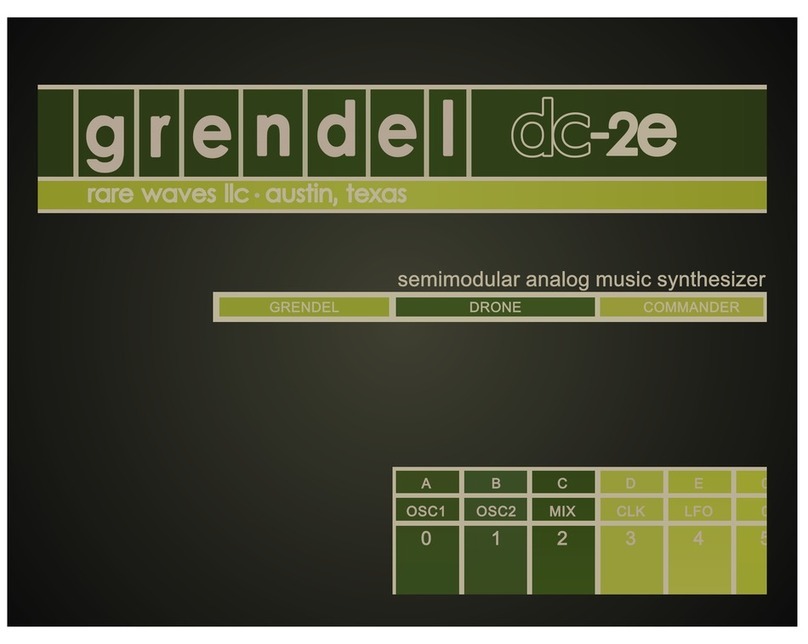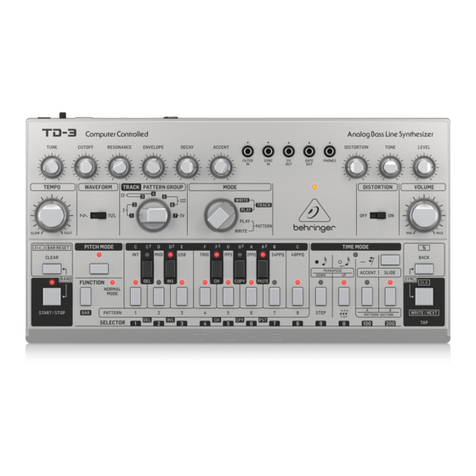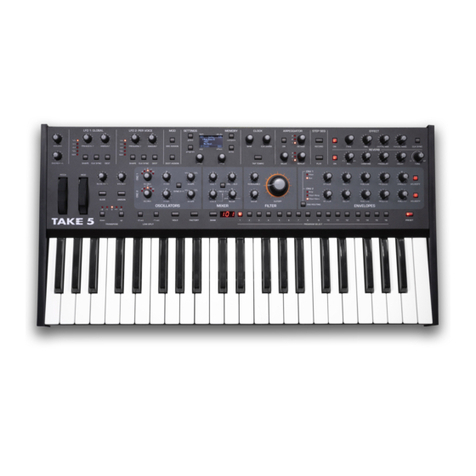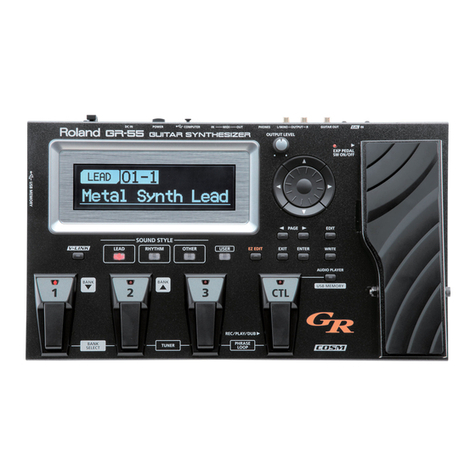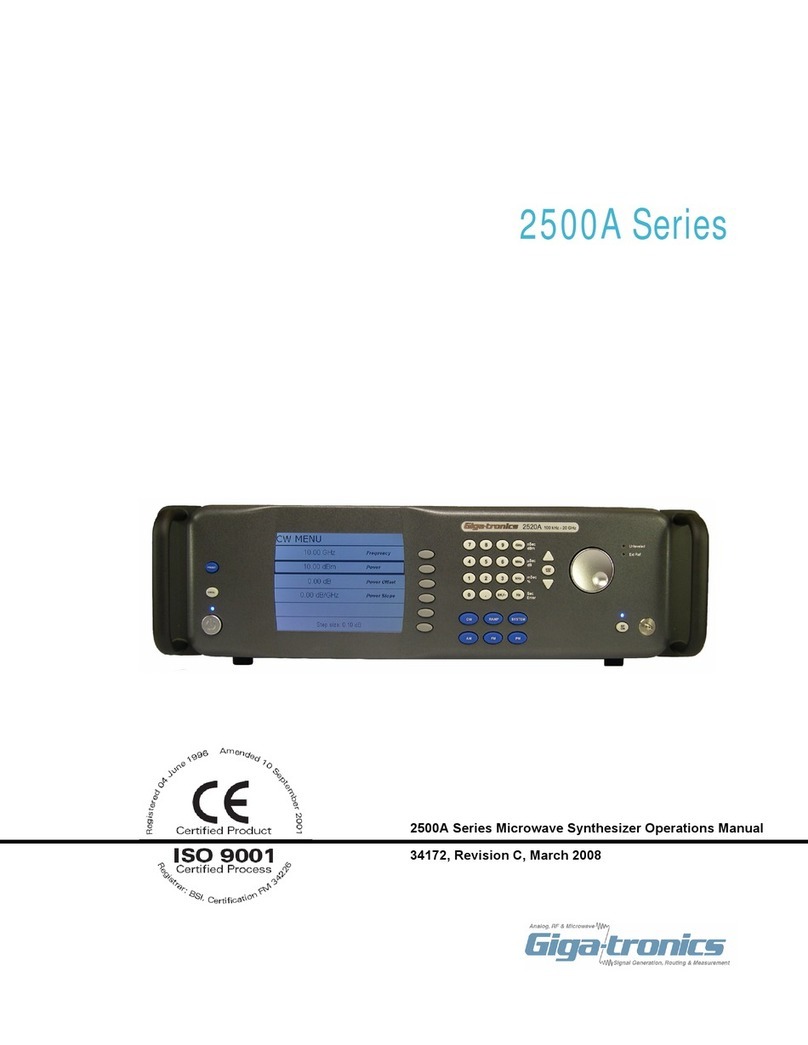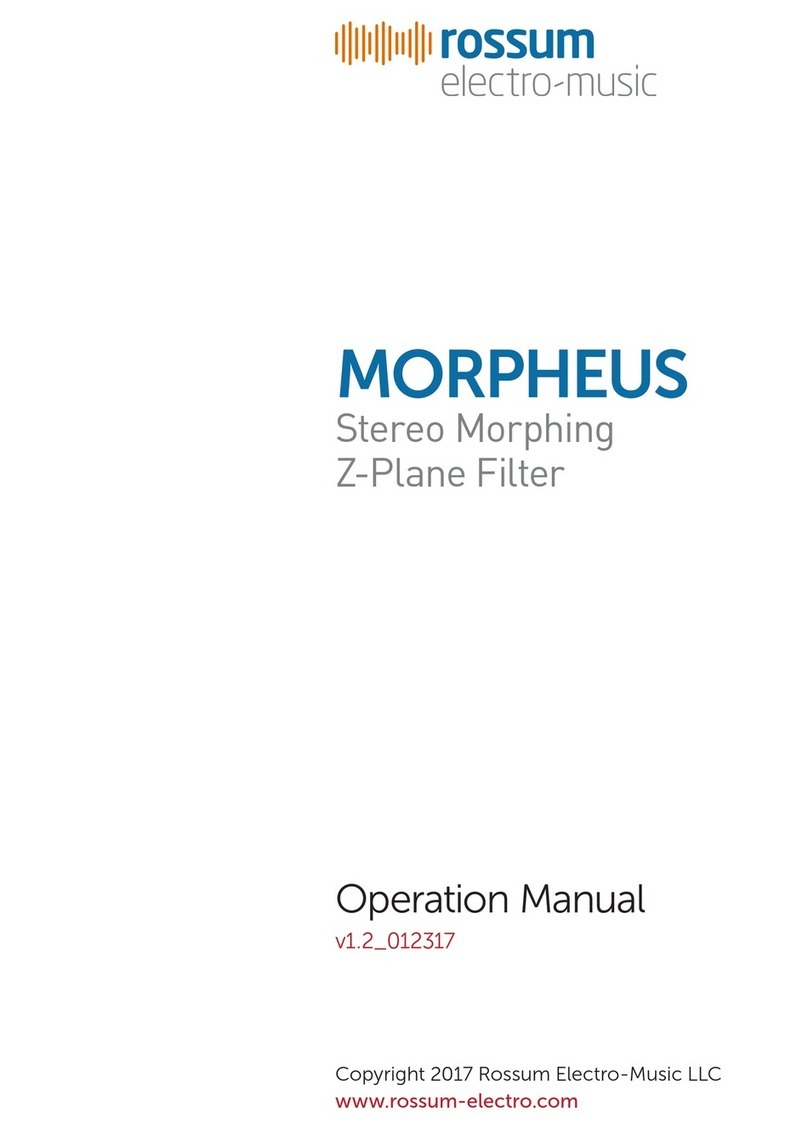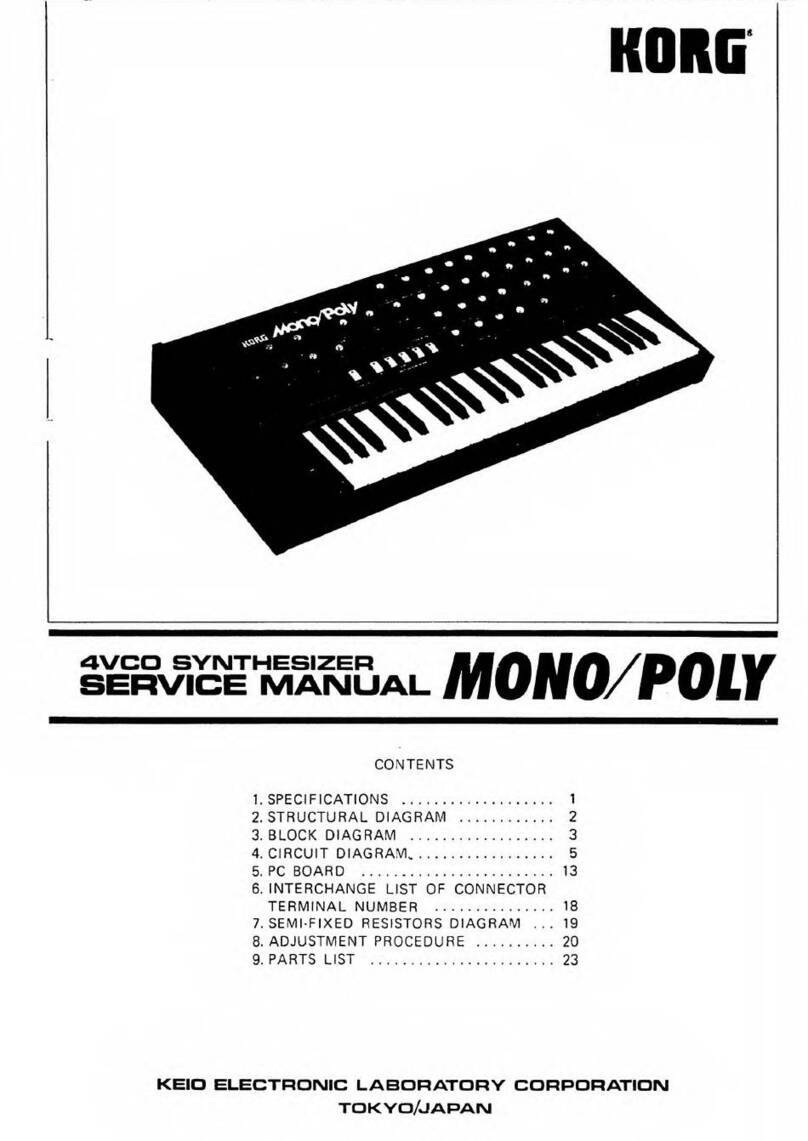Nonlinearcircuits Null-A2 Manual

nonlinearcircuits
NULL-A2Build & BOM
Null-A2is an all-in-one analogue synth packed into 42HP.
It features:
2 VCOs
1 state variable VCF
1 ladder VCF
1 VC Delay
3 VCAs
2 LFOs
Mixer
Headphone amp
Sequencer
Clock Divider
Sample & Hold (S&H)
Sloth chaos generator
It does not feature MIDI, micro-processors or any software.
There are several presets that run between the switches of the jacks. If you
insert a patch-cable into either jack the preset is disconnected.
a) VCO1 pulse out > state variable VCF input
b) VCO2 pulse out > ladder VCF input
c) state variable VCF LP output > VCA1 input
d) ladder VCF output > VCA2 input
e) VCA1 output > mixer
f) VCA2 output > mixer
g) Mixer output > headphone amp
h) ADSR output > VCA1 CV input
i) Clock divider /8 output > ADSR gate input
j) LFO 1 square output > S&H clock input
k) LFO2 triangle output & Sloth chaos output & sequencer CV output > S&H
sample input
l) LFO2 square output > Clock divider input
m) LFO2 square output > Sequencer clock input
Preset patches a, b, c, d, h, i, l, m from the above list

Most of these are simply to save a few patch-cables.
The interesting one is the signals from the Sequencer, Sloth chaos and Tri
from LFO2 are mixed and fed to the S&H sample input. This means it is
continually generating stepped and smooth CVs (for there is a Slew pot) that
are different but related to everything else that is going on.
The Clock Divider gives divisions of /2, /8, /32 and /128.
The Sequencer has 4 stages but the direction control can be used to make it
count forwards and backwards enabling more complex sequences. In normal
operation, the ‘x’ output gives the CV generated by the stages 1 thru to 4,
meanwhile the ‘y’ output will give a CV signal generated by stages 4 thru to
1.
The VC Delay can be used to generate reverb type sounds but can also be pushed
into making all sorts of unexpected zipper noises and effects when the Time
and Feedback pots are turn high.
The third VCA is built into the input of the Ladder VCF. If nothing is patched
into the ‘CV VCA’ input, the VCA is always on.
The Sloth Chaos is a very slow CV generator, it can be used to liven up a
patch and create slowly evolving sounds. It cannot be controlled, it does what
it wants.
Components:
All passives are 0805; make sure the capacitors are rated for at least
25V, preferably 50V. The 10uF capacitors will only be available with a
25V rating, which is fine.
C46-C74 are all listed as 10uF, these are for decoupling. You can replace
some of them close to ICs with 100nF if you wish, but the ones near the
power connector and close to the bottom edge of the PCB should all remain
10uF.
The LFOs and Sloth have been designed to work with 2 pin bipolar LEDs.
You can just install normal LEDs instead, if you want to be boring. The
ADSR uses a regular LED.
RL in the value list means you need to choose a resistor to suit the
brightness of your LED. For blue/red 2 pin bipolar LEDs I used 5k1.
The ICs are all SOIC. You can get the PT2399 and 8 pin 78L05 from Tayda
for a few cents.
R8 and R30 can be 1k tempco thru-hole resistors OR regular 1k 0805 if you
don’t care all that much about VCO tuning stability. Do not install both
types. If you do use tempco thru-holes, install them so the resistor body
is resting on the 2 transistor pairs (Q1 & Q2, Q3 & Q4).
Part numbers are for www.taydaelectronics.com, just to give examples.
There is no R207, C73, Q25 on vers 2 PCBs, so do not look for them.
The diode numbering got a bit messed up, so ignore it. It doesn’t matter,
there are 16 LL4148 diodes and 2 S1JL power diodes, these are located
right next to the power connector, marked with a dot to indicate the
cathode and are for reverse voltage protection.
R195 (1M) can be used to reduce the maximum attack time in the ADSR. I
leave it out on my builds.
Any components with “*” next to them means they can be tweaked, for now
ignore the * and use the value given.
When soldering R148, drag the solder across the connect it to the via
just below

PART
NUMBER
VALUE
COMMENTS
C1
2n2
C2
2n2
C3
1nF
C4
1nF
C5
100p
C6
100p
C7
220nF
C8
100n
C9
100n
C10
100n
C11
100n
C12
470p
C13
10u
C14
10u
C15
10n
C16
100n
C17
1u
C18
10n
C19
10u
C20
100n
C21
10u
C22
100n
C23
100n
C24
100n
C25
100n
C26
1n
C27
10n
C28
1n
C29
10u
C30
10u
C31
10u
C32
1u
C33
1nF
C34
10n
C35
1u
C36
1u
C37
1u
C38
1u
C39
1u
C40
1u
C41
10u
C42
10u
C43
10u
C44
10u
C45
10u
C46
10u
C47
10u
C48
10u
C49
10u
C50
10u
C51
10u
C52
10u
C53
10u
C54
10u
C55
10u
C56
10u
C57
10u
C58
10u
C59
10u
C60
10u
C61
10u
C62
10u
C63
10u
C64
10u
C65
10u
C66
10u
C67
10u
C68
10u
C69
10u
C70
10u
C71
10u
C72
10u
C73
-
not on vers 2
C74
10u
R1
91k
R2
100k
R3
100k
R4
2M2
R5
24k
R6
10k
R7
56k
R8
1kT
or thru-hole
R9
15k
R10
220R
R11
100k
R12
100k
R13
1k
R14
10k
R15
39k
R16
10k
R17
100k
R18
10K
R19
10K
R20
100k
R21
100k
R22
100k
R23
91k
R24
100k
R25
100k
R26
2M2
R27
24k

R28
100k
R29
56k
R30
1kT
or thru-hole
R31
10k
R32
15k
R33
220R
R34
100k
R35
47k
R36
1k
R37
10k
R38
39k
R39
10k
R40
100k
R41
180k
R42
180k
R43
100k
R44
10k
R45
10k
R46
100k
R47
150k
R48
100k
R49
100k
R50
100k
R51
100k
R52
470k
R53
2k7
R54
200k
R55
2k2
R56
33k
R57
27k
R58
2k2
R59
33k
R60
56k
R61
56k
R62
100k
R63
100R
R64
100R
R65
62k
R66
100k
R67
15k
R68
100R
R69
100R
R70
100k
R71
150k
R72
1k
R73
100k
R74
8k2
R75
1k
R76
470R
R77
12k
R78
62k
R79
2K7
R80
1K
R81
1K
R82
1K
R83
1K
R84
470K
R85
470k
R86
15k
R87
330R
R88
2K7
R89
1K
R90
1K
R91
12k
R92
100k
R93
47k
R94
47k
R95
1K
R96
12k
R97
47k
R98
30k
R99
47k
R100
470R
R101
470R
R102
220k
R103
68k
R104
10K
R105
10K
R106
100k
R107
330k
R108
1k
R109
100k
R110
47k
R111
47k*
R112
10k*
R113
22k
R114
220k
R115
2K2
R116
1K
R117
10k
R118
10k
R119
10k
R120
15k
R121
10k
R122
15k
R123
2k2
R124
47k
R125
220k
R126
1k
R127
100k
R128
100k
R129
100k
R130
100k
R131
100k
R132
100k
R133
1k
R134
100k
R135
1k
R136
1k
R137
1k

R138
1k
R139
100k
R140
12k
R141
47k
R142
30k
R143
47k
R144
470R
R145
470R
R146
220k
R147
1k
R148
12k
R149
47k
R150
30k
R151
47k
R152
470R
R153
470R
R154
220k
R155
1k
R156
470k
R157
100k
R158
100k
R159
100k
R160
2M2
R161
1k
R162
1k
R163
100k
R164
10k
R165
1k
R166
100k
R167
1k
R168
100k
R169
330k
R170
4M7
R171
220R
R172
100k
R173
1k
R174
2K2
R175
4K7
R176
RL
LFO LED
R177
1k
R178
33k
R179
22k
R180
10k
R181
22k
R182
10K
R183
22K
R184
150K
R185
56k
R186
560K
R187
47k
R188
15K
R189
47k
R190
56k
R191
22k
R192
100k
R193
47K
R194
33k
R195
1M
optional, see
notes
R196
1k
R197
100k
R198
100k
R199
RL
ADSR LED
R200
1k
R201
47k
R202
330R
R203
100k
R204
10k
R205
330R
R206
47k
R207
-
not on vers 2
R208
4M7
R209
330k
R210
100k
R211
100k
R212
220R
R213
2k2
R214
4k7
R215
1k
R216
100k
R217
RL
LFO LED
R218
2k2
R219
2k2
R220
2k2
R221
2k2
R222
2k2
R223
2k2
R224
2k2
R225
2k2
R226
10k
R227
100k
R228
10k
R229
100k
R230
10k
R231
100k
R232
100k
R233
100k
R234
100k
R235
100k
R236
100k
R237
100k
R238
100k
R239
150k
R240
100k
R241
1k
R242
100k
R243
150k
R244
100k
R245
1k
R246
10k

R247
100k
R248
100k
R249
10k
R250
1M
R251
1M
R252
1k
R253
1M
R254
4k7
R255
4k7
R256
100k
R257
100k
R258
6M8
R259
4M7
R260
10M
R261
RL
Sloth LED
R262
100k
TL072
U8,
U10,
U12,
U15,
U16,
U22,
U24,
TL074
U1, U3,
U5,
U13,
U14,
U17,
U18,
U23,
U25
LM13700
U2, U4,
U6,
U11
PT2399
U7
4024
U19
4029
U21
4052
U20
LM78L05ACMX
U9
8 PIN SOIC
Tayda: A-629
Trimpot 100k
multiturn
TR1,
TR3
Trimpot 20k
multiturn
TR2,
TR4
Trimpot 100k
TR6,
TR7,
TR9
Trimpot 50k
TR5
Trimpot 1k
TR8
BCM847
Q13,
Q17
SOT23-6 AKA
SOT-457
Mouser Part No:
771-BCM847DS115
BC847
Q1, Q3,
Q5, Q7,
Q8,
Q10,
Q14,
Q15,
Q16,
Q18,
Q20,
Q21,
Q22,
Q23,
Q26,
Q30,
Q32,
Q33,
Q34,
Q37,
Q38,
Q39,
Q40,
Q41,
Q42,
Q43
SOT23
There is no Q25
on vers 2.
BC857
Q2, Q4,
Q6, Q9,
Q19,
Q24,
Q27,
Q28,
Q31,
Q35,
Q36,
SOT23
S1JL power
diode
D6, D7
The ones with the dots,
near the power
connector
LL4148
all
other
diodes
Diode numbering is a bit
messed up, so ignore
J108 or J109 or
J112
(MMBFJ108)
or MMBF5459
or MMBF5486
Q11,
Q12,
Q29
SOT-23

COMPONENT
QUANTITY
COMMENTS
2 pin bipolar LED
3
5mm
LED
1
5mm
100k pot
29
1MA pot
4
MONO jacks
50
Kobiconn type
STEREO jack
1
Kobiconn type
Eurocrack power connector
1
single vactrol
1
anything okay, even DIY
10 Pin 2.54mm Single Row
Female Pin Header
13
Tayda: A-1306
40 Pin 2.54mm Single Row
Pin Header Strip
at least 4
cut into 10 pin lengths
Tayda: A-197
Passives, transistors & diodes BOM…..
GET SPARES!!!!!!
470P
1
100n
10
100p
2
10n
4
10u
41
1n
5
1u
8
220n
1
2n2
2
100k
66
100R
4
10k
26
10M
1
12k
5
150k
5
15k
7
180k
2
1k
33
1k Tempco
2
1M
4
200k
1
220k
5
220R
4
22k
5
24k
2
27k
1
2k2
14
2k7
3
2M2
3
30k
3
330k
3
330R
3
33k
4
39k
2
470k
4
470R
7
47k
17
4k7
4
4M7
3
560k
1
56k
6
62k
2
68k
1
6M8
1
8k2
1
91k
2
RL
4
BC847
26
BC857
11
LL4148
16
J108,J109,J112
or similar
3
S1JL
2


Small mod required for R148:

Set-Up
VCOs: The 100k trimpots on the VCOs are used to set up the panel pots so they
have minimal dead zones at the start and ends of their travel.
The 20k trimpots are used to dial in 1V/oct tuning; you should be able to get
3 octaves of decent tracking from these VCOs. I use a guitar tuner and get the
VCO to some note, then stick in 1V to the CV input (make sure the CV pot is
turned to max) and adjust the 20 trimpot until the tuner shows the same note 1
octave up. Remove the 1V source and your VCO will not return to the original
frequency, tune the 20k trimpot again to a note, put in 1V…..and so on. It
takes a few goes until you dial it in to the correct tuning.
State VCF: The balance trimpot (TR5) can usually be left at its mid-point. If
you notice one of the outputs is much louder than the other, adjust this
trimpot to get the outputs balanced.
TR6, the Freq offset trimpot is used to ensure the Freq pot is functional
across its range, same idea as the 100k trimpots on the VCOs.
Ladder VCF: TR9 Ladder VCA trimpot at the top of the PCB is used to set up the
VCA. Plug in a signal and listen to the output. Now plug a lead into the VCA
CV input with the other end hanging free. Use this trimpot to turn off any
signal you may still hear. Set it to the point just where the signal can no
longer be heard. Remove the lead plugged into the VCA CV input; you should now
hear the signal again.
TR7 Freq this sets the useful operating region of the CV inputs and Freq
cutoff. Adjust it so you get good sounds coming out of the VCF when tweaking
the Freq pot, by good sounds I mean runny liquid acid.
TR8 Q sets the range for the Q or resonance, set it so you get the filter
screaming when the Q pot is turned up near max.

Board close-ups
Top right

Bottom right

Top middle

bottom middle

Top left

Bottom left

SCHEMATICS



Other Nonlinearcircuits Synthesizer manuals
